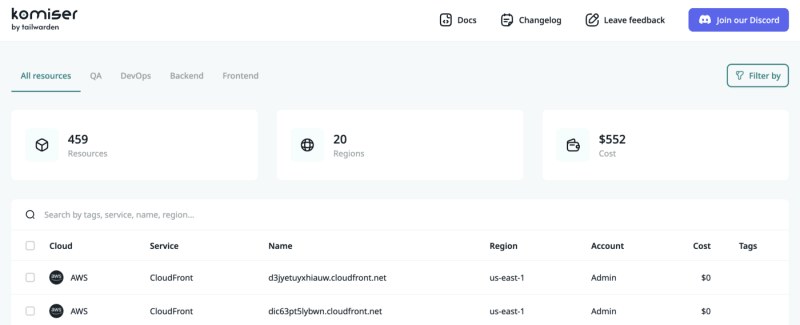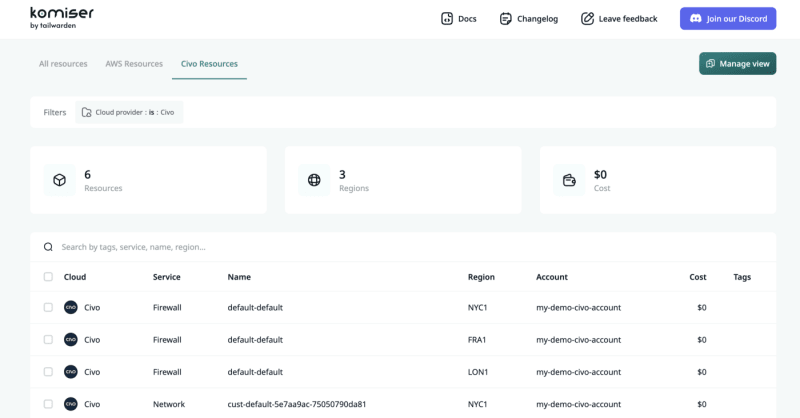Which window do you look through to see the cloud?
Keeping inventory is something that needs to be done across all types of businesses of all shapes and sizes and across many industries. Arguably it’s easier to keep an inventory of some businesses than others. Take your neighborhood shopkeeper for example, depending on how many years of experience they have and how many generations the business has been in the family, they can at a glance see what their shop is missing, what they are running low on, and what is close to expiring. On the other hand, cloud engineers have a much tougher task.
There is no one panel, dashboard, or console for engineers to look at where they’ll find all the information needed to keep their cloud infrastructure secure, flexible, responsive, resilient, and importantly, under budget. Up until now, to keep an inventory of all the cloud resources in a complex cloud environment, constant console tab switching, logging in and out of cloud accounts, and toggling between cloud providers were all commonplace. That doesn’t have to be the case anymore.
In a previous article, we explored the importance of enabling and embracing a cost-conscious culture at all levels of an organization. Now let’s look into a new Komiser feature that can be pivotal in the journey toward demystifying cloud costs and enabling every team member to be involved in safeguarding the organization’s treasure chest.
In the upcoming section, we will focus on using Komiser with AWS, but the workflow can be applied to all the other cloud providers that Komiser supports.
Introducing Komiser Custom views
Once you have a centralized dashboard with all of your cloud resources in one long resource inventory list, you will probably agree that it isn’t the most useful way of making sense of your resource inventory. Namely, because even a simple environment can quickly run into the tens or hundreds of individual resource items and can quickly become difficult to make sense of. This is where custom views come in. They serve as a way to save the filtering and sorting actions we perform in the inventory list, adding them to a new tab for easy future access. To demonstrate, I’ll save a view that shows me all S3 buckets that contain the name “cloud” in the identifier.
Firstly we filter the resources, in this case, we will use “Cloud service: is : S3” and “Resource name: contains : cloud”
Then you can save the filter search as a view and give it a name:
Below we can see the S3 Cloud buckets custom view tab appear right beside the All resources tab. You can now easily click on the created custom view any time you want to see the subset of resources that fall into the saved multiple filter search.
I’m hoping you can see the wide array of opportunities that opens up now that we have the ability to apply complex filters, save them, and have quick access to them in future visits to Komiser. Let’s explore some potential use cases.
Use cases
Cloud environment watchtower
Organize your custom views to match your team divisions or match the components of your microservice applications. Keep track of the resources being used by each team and the cost associated with them.
In the image below we are mapping the different teams in the organization to each custom view. This can be achieved by filtering by specific tags. In the case above each resource is tagged with “CostCenter: team name” and subsequently filtered and saved as a view for easy tracking and monitoring.
Once a custom view is created and selected, you can share it publicly by sharing the custom view URL.
Here an engineer can easily toggle between the different team custom views to see if costs are in line with expectations and see if naming and tagging conventions are being followed.
Compliance panel
Since custom views are dynamic, if a resource is added to your environment and it matches a certain custom view filter it will automatically be added to that specific custom view. This could be helpful to track untagged resources. If you are working in an environment with a robust tagging strategy, surely it should be applied to all resources, and if there is a resource that is untagged you should know. An easy way to know is by having an Untagged resources custom view which gathers resources that fall into the filter “All tags : which are empty”
This custom view can serve as a good starting point for finding non-compliant resources.
Bloated budget catcher
Similar to organizing custom views around CostCenters, it might also make sense in your environment to have a custom view that catches resources that are projected to cost a set dollar amount threshold, this could be useful in development environments to make sure that certain cost-intensive resources don’t go unchecked. Or even in Production environments to make sure that horizontal scaling processes stay within the budget.
A note to say that in the coming weeks, we will be adding a feature to add billing alerts to Komiser, which will enable you to be notified if a resource or custom view surpasses a certain cost threshold. You will then be able to configure your notification channel of choice. The best way to be the first to know when this feature is out is by joining our Discord community.
Multicloud dashboard
Use distinct custom views to keep track of resources that come from different cloud providers. In the following example, I’m using the following configuration file to pool my AWS and Civo resources in the Komiser resource inventory.
I can then use the Cloud provider filter to sort resources between providers.
Now I can easily toggle between all the resources in one cloud provider or another.
This is what the Civo custom view shows:
The custom views feature allows for more granular control over your multi-cloud infrastructure than ever before, enabling engineers to filter and sort resources based on specific criteria and save these filters for future use. With the ability to organize custom views to match team divisions or match the components of microservice applications, cloud engineers and developers can now easily keep track of their cloud environment and ensure that no resources go unnoticed and that you always stay under budget.
Regardless if you are a Developer, DevOps, or Cloud Engineer. Dealing with the cloud can be tough at times, especially on your own. If you are using Tailwarden or Komiser and want to share your thoughts doubts and insights with other cloud practitioners feel free to join our Tailwarden discord server. Where you will find tips, community calls, and much more.














Top comments (0)